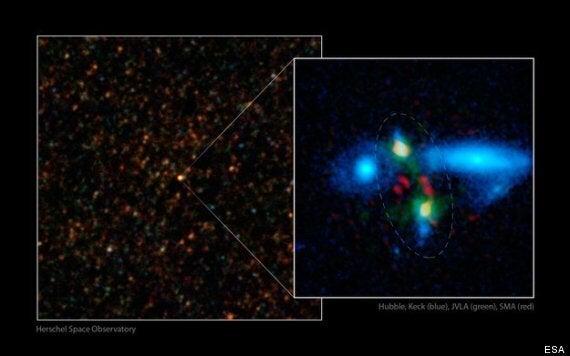Astronomers have pictured a "missing link" galaxy collision in deep space which might explain what happened in the first few billion years of the universe.
The picture shows a ridiculously massive collision between two galaxies, which formed together into a single mass more than 10 times the size of the Milky Way 11 billion years ago.
Inside the furnace of this galaxy pair - known as HXMM01 - stars form at a rate of more than 2,000 suns a year.
But the picture is not just beautiful - it's an important step to understanding how our universe developed in the initial three to four billion years after the big bang.

The European Space Agency's Herschel space telescope has recently exhausted its supplies of liquid helium coolant, which allowed it to observe the "cool" universe in infra-red for more than three years.
But data from the telescope is still leading to new discoveries, including how early "elliptical" galaxies formed, and how they grew so large in a relatively short space of time.
The galaxy merger pictured by Herschel, and reported in Nature by UC Irvine's Hai Fu, shows what was happening three billion years after the big bang. The collision was sudden - taking only 200 million years to run.
"It's like a train wreck," Fu told the LA Times.
It was once thought that elliptical galaxies formed by the slow gathering of small dwarf galaxies, but the picture suggests this could have happened more quickly by larger galaxies smashing into each other, sparking a sudden - and finite - explosion in the number of new stars formed.